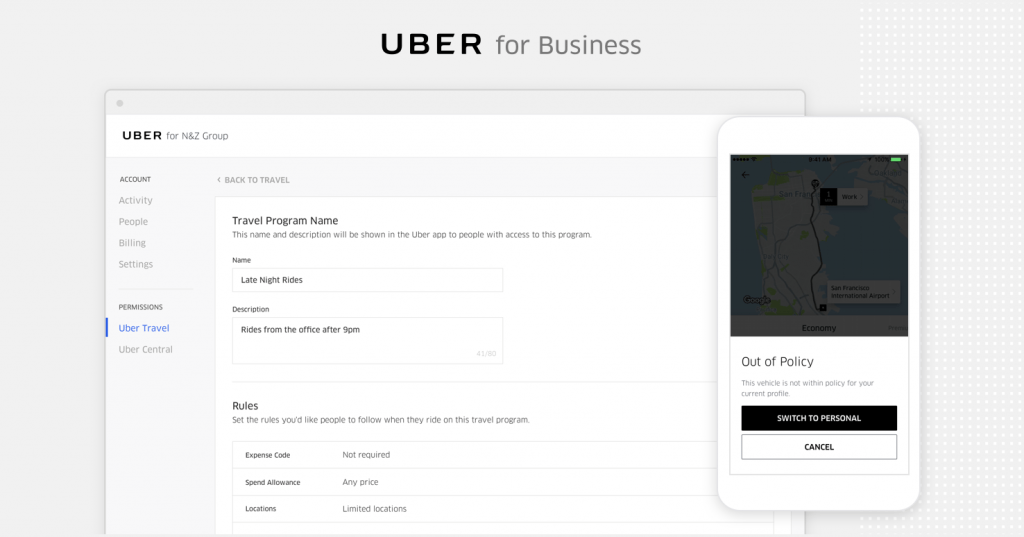Skift Take
Uber's refreshed business platform will help streamline corporate rideshare use, especially for unmanaged travel programs.
Uber for Business is launching a revamped version of its business travel platform, three years after the service originally debuted, with the ability for companies to set specific rules for how employees can use the service.
This self-service approach to travel management has been a major need for Uber’s clients, which haven’t had the granularity to be able to set rules for specific groups of travelers. There’s no limit to the number of riders that can be placed in one of these groups, giving bigger companies the ability to more easily scale and track their Uber usage.
As of Tuesday, managers can create “set it and forget it” rules for workers, for instance, granting them rides home from the office after a certain hour, or segment out perks to specific types of employees.
“Revenue on the platform has tripled in 2017 so far,” said Julie Herendeen, head of strategy and marketing for Uber for Business. “Once customers had an always-on platform for transportation, they were trying to do a whole range of things with Uber, like commutes, late-night rides home, customer rides, and more.”
The updated service’s interface has been streamlined and updated, and will be available to Uber’s clients at no additional cost. Managers can now set spending limits along with geographic limitations on where rides can be billed to the company, along with more granular restrictions on various aspects of a trip.
Despite its organizational struggles, Uber still holds a vast lead over rival Lyft in the ridesharing space. Expense data shows Uber also has a commanding lead on Lyft in business travel, but Lyft is slowly gaining ground.
The goal, according to Uber executives, is to make it simple for employers to enable workers to use Uber for reasons beyond just a replacement for a taxi or car service ride. These could include giving an Uber allowance to an employee for personal use as a perk, allowing them to use Uber as part of their commute, or even facilitating rides home for clients or prospects.
This squares with what Uber for Business’ head of enterprise for New York told us in April; more than just rides, Uber wants to position itself as a mobility service with many different use cases, focused on employees and corporate needs alike.
This update to the platform has been in the works for about a year.
“This new version of the platform is focused on truly enabling those use cases that businesses were already turning to us for, but Uber for Business wasn’t built for yet,” said Greg Greiner, Uber for Business’ head of product. “When you look at how we’ve rebuilt the product, we’ve done to be multi-use. The future is really about how we continue to expand to allow the product to be used for more.”
The platform’s reporting and expense tracking tools have also been refined, with the end goal of giving companies more insight into their spending on ground transportation. Eventually the platform will be able to make suggestions for managers on how to better manage spending, according to the executives.
The Daily Newsletter
Our daily coverage of the global travel industry. Written by editors and analysts from across Skift’s brands.
Have a confidential tip for Skift? Get in touch
Tags: business travel, uber
Photo credit: Uber is making it easier for businesses to use its ridesharing services. In this photo from March 15, an Uber is shown at LaGuardia Airport in New York. Seth Wenig / Associated Press
